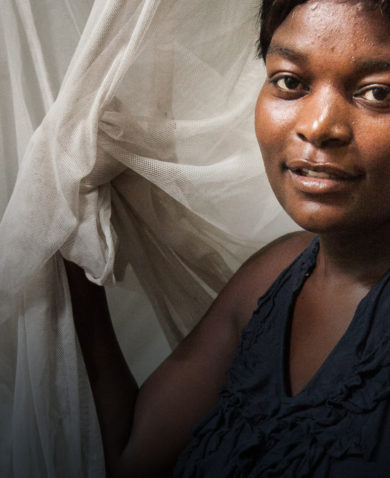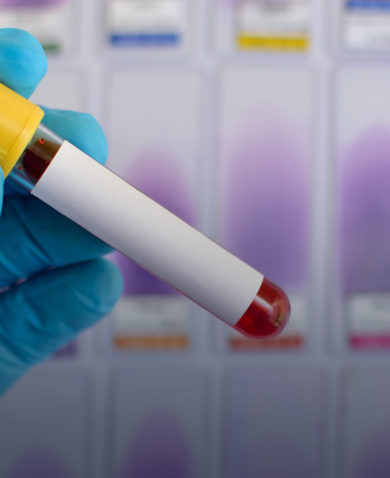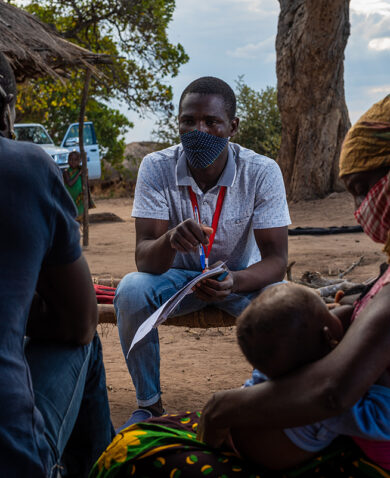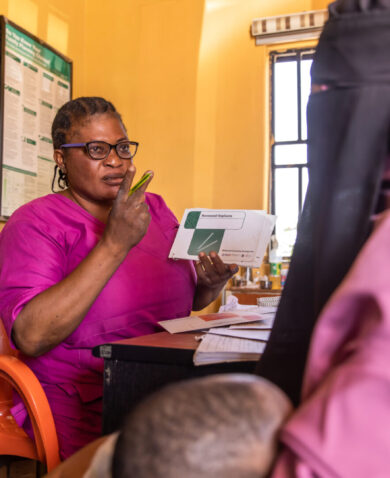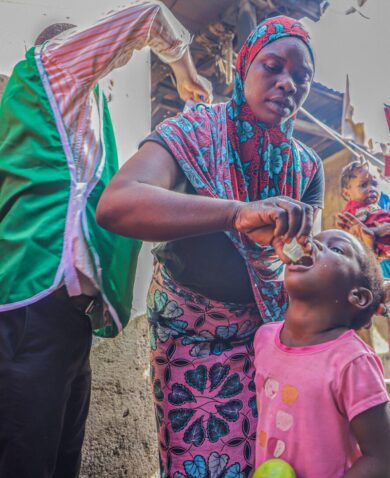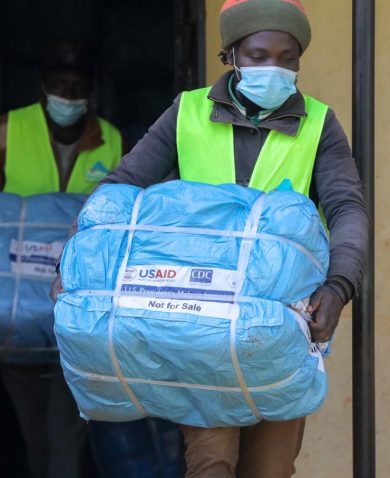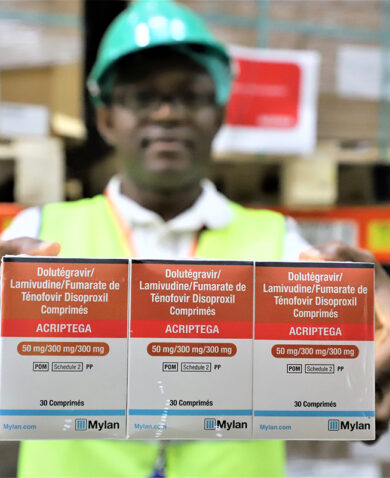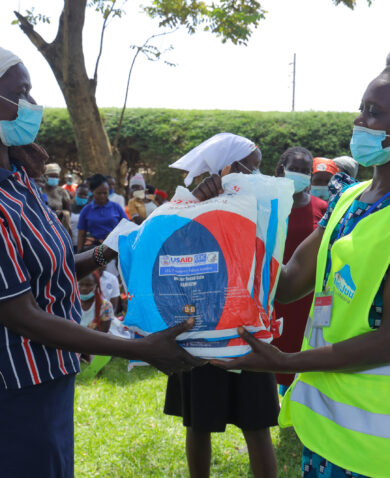
3 Questions With Grace Adeya on PMI’s Impact in the Fight to End Malaria
April 23, 2021 | 5 Minute ReadFor World Malaria Day, Malaria Director Grace Adeya looks back at the impact of the U.S. President's Malaria Initiative (PMI) in the quest to end malaria over the last 15 years and how USAID GHSC-PSM have supported their efforts.
The U.S. President’s Malaria Initiative (PMI) is a significant contributor in the global quest to end malaria. Since its launch in 2005, PMI has conducted malaria prevention and treatment programs in 24 malaria-endemic countries in sub-Saharan Africa and Southeast Asia. Over the past five years, the USAID Global Health Supply Chain Program-Procurement and Supply Management (GHSC-PSM) project has supported the efforts of PMI. This World Malaria Day, GHSC-PSM Malaria Director Grace Adeya reflects on PMI’s work in the malaria space over the past 15 years while sharing some of the project’s contributions to their efforts.
This interview has been edited for length and clarity.
1. How has PMI changed the way it carries out this work over the past 15 years?
I was fortunate that I got into the malaria space just before PMI. USAID at that point was not really authorized and did not have the funding to procure commodities. The biggest challenge in trying to get countries to even think through how to bring around change in their malaria programs all came back to commodities.
The positive thing that PMI brought, at least from my perspective as a supply chain consultant and professional, is that they recognized the importance of supply chain right from the onset.
[They tried to] leverage or use the existing supply chain systems to distribute malaria commodities to the furthest extent possible. That has changed over time as countries have been less able to support their systems as a whole, but it was their primary objective in any new PMI country.
First-case treatment at that point was still chloroquine. There were discussions beginning to happen such as, “We have these [artemisinin-based combination therapies (ACTs)]. How do we transition to them?” because everyone recognized chloroquine wasn’t working. When we would talk to governments as we went around as part of the Malaria Action Coalition, everything came back to, “We would be interested in switching to ACTs, but you’re asking us to move from an [inexpensive] product [that was worth about $0.10 or less at that point for a treatment dose] to ACTs.”
Around that time, Novartis came out with [an ACT] product that I think was about $4.80 at that point for a treatment dose. The difference was so massive that there were lots of questions as to whether anyone would even be willing to transition given the costs. And the evidence just wasn’t there.
The care space was very limited. Anyone with a fever would be treated presumptively as malaria and/or pneumonia. There was no real diagnostic available other than microscopy. And then in the prevention space, there were beginning discussions around the use of bed nets, [but] at that time we weren’t even looking at insecticide-treated bed nets or indoor residual spraying.
Traditionally [with] new medicines, you have to first get this product onto your essential medicines list and those tended to require specific clinical guidance and WHO guidance to help facilitate the change in countries. There was a lot of pushback from clinicians.
There were also discussions around If you get this product in country, how then do you ensure its availability? Do you want to integrate this into existing supply chain systems in the country or to be more effective, should it be a parallel system? There was a whole discussion on things we needed to consider to help facilitate the conversations in country about getting people to change policy.
So that’s the environment in which PMI arose, and [PMI] was such a game changer because it was USAID committing to procure products for countries, and it literally changed the conversations in the countries we were going to because it took away that onus from countries trying to figure out — from within their limited country funding — how to procure this extremely expensive product.
PMI has done a great job of getting the stock there, but if it sits there and you’re continuously stocking out at the lower levels, it does not serve anyone’s purpose. If you can use existing local country mechanisms — using private sector in a country, using 3PL services — those are still country capacity. [PMI recognized that] we can build up that alternative capacity so that it works. And with PMI, we’re looking at capacity less as public sector capacity and more as national capacity to achieve objectives and regional capacity. And I think that is really the emphasis of PMI now. To what extent are we building local capacity to meet the eventual [elimination of malaria]?
That shift to elimination requires us to look more strategically at what we’re doing. Are the systems and tools we’re using right now actually putting us in a place to be able to think more strategically about how we get toward elimination?
2. In the last five years, how has GHSC-PSM contributed to advancing PMI’s efforts?
For the commodity space, it’s really rationalization of our long-lasting insecticide-treated net (LLIN) market and the rapid diagnostic test space. We helped guide PMI toward standardization of the rapid diagnostic test procurement process and moving away from the sole-source market that we were going toward.
From the LLIN space, we were able to rationalize the number of available products, reduce the variability of the LLINs with the objective of being able to have interchangeable LLINs, and provide suppliers with a little more consistency.
There are a few things we’ve done in the procurement space for sulfadoxine-pyrimethamine + amodiaquine and artesunate injectable, which are sole-source products. Basically, there’s only one global manufacturer, so we’ve been moving toward more of a pre-positioning strategy. The first couple years of the project, we had a really hard time making sure we had sufficient products [well in advance of the seasonal malaria chemoprevention campaigns], and for the last two years, we completely shifted our strategy such that we actually ended up able to donate product to one of the other global procurers.
On the in-country assistance perspective, we’ve done quite a bit of work toward improving the end-use verification data. Focus on data is where I think we’re going to be able to demonstrate some impact as GHSC-PSM. We’re really moving toward rationalizing some of the data collection processes so that we’re getting data that we feel is more reliable and useful and that can help inform strategies.
3. I’ll end with a question about your personal perspective. How does it feel to have been involved with PMI since it was launched 15 years ago?
I got into malaria because I was a physician in Kenya, and at the time I graduated my medical school process, it was also the height of the HIV/AIDS space. I felt like everyone was focused on HIV/AIDS, but people were dying of malaria at 10 times the number of HIV/AIDS, and there was such a significant gap.
The intervention costs for malaria were actually less than would have been needed for AIDS, so my public health hat was [thinking], Great let’s focus on HIV/AIDS, but who was speaking for the malaria patients? Malaria was impacting the voiceless in the countries. The [children] under-fives were the ones who were dying.
I got into the supply chain space as a physician because I was working in facilities where we would maybe have the high “fad” meds. We would not have chloroquine, but we would have azithromycin which was 10 times as expensive. I kept trying to figure out “Why is this? What decisions are we making that we’re ignoring the products that would save the most lives for what is the latest and best products that we don’t necessarily need?”
The first few years I was working on the Malaria Action Coalition, we would go out to governments and talk to them about their policies, and I remember the Kenyan minister, who was sort of permanent Secretary of Health [and] who was my professor in college, who was [saying], “You want me to move from a product that costs me 10 cents, to this product that’s going to cost the entire health budget that we have. How can I make this argument? I can understand why you want to do this, but I need to make an argument to the funders and to the politicians that this makes sense and what argument are you giving me?”
So PMI’s coming in and saying, “Look, we’re willing to procure the commodities you need if you’re willing to change your [clinical] policy,” was such a game changer, and it made such a difference. There’s no way we would have seen what we have seen in terms of malaria incidence without that.
So, personally, I think I have gone from working in a space where … we’re not making a difference to working in a space where we know we have that opportunity to make a significant difference and how to keep making that difference is important.”
Posts on the blog represent the views of the authors and do not necessarily represent the views of Chemonics.









